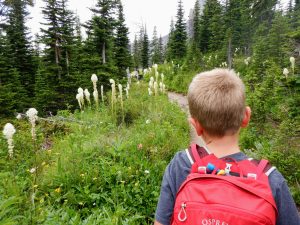Nature’s Power to Transform Habits

To view the photo-rich magazine version, click here.
Originally appears in the Spring 2020 issue.
By Juliana Fujii
Creative lesson plans lay the necessary groundwork for educating students about the natural world, the threats it faces, and how they can be part of the solution. A solid understanding of these concepts is now more important than ever, but the age-old question remains: how do we impart this information in a way that sparks action? Ideally, our lessons motivate our students to take action to protect the environment, but it’s difficult to do that within the confines of a classroom and the semester’s limited hours.
Recent years have seen the teaching community move toward a more holistic approach — one that incorporates experiential, hands-on activities. Teachers are expanding student experiences of nature to all five senses, moving beyond dusty textbooks and eye-numbing SmartBoards to solar panels and local lake-water samples. This kinesthetic learning is not just more engaging; it’s the core of environmental science: it shows students how lessons apply in the “real world.”
But the link between the classroom and the home needs to be fortified. While fun class activities ignite smiles and spark epiphanies, many students simply move on to other pursuits when the school year finishes. Transitioning to a more eco-friendly lifestyle often slides to the bottom of the to-do list. There must be a way to capitalize on all the school year’s hard work, to crystallize the knowledge gained into lifestyle habits that endure.
This content is restricted to subscribers only.
If you are not yet a subscriber, please consider taking out a subscription here.
If you are an existing subscriber, kindly log in or contact us at info@greenteacher.com for more information.










